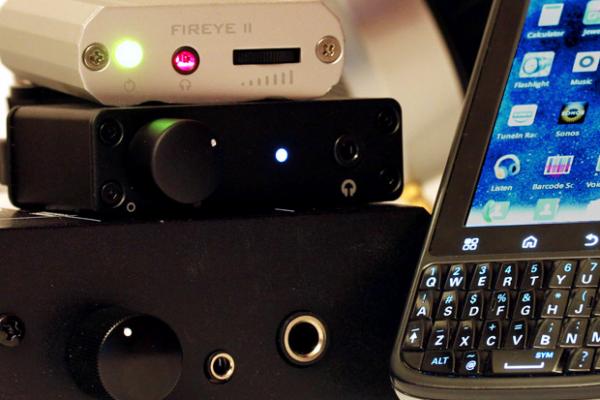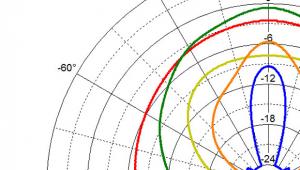I don't see part 2, if there is supposed to be a link.
Output Impedance: A Show and Tell

Hanging out at the recent Rocky Mountain Audio Fest, I listened in on a conversation that S+V writer Mike Trei was having with an audio manufacturer who's getting into the headphone biz. (You'd recognize his name, but I can't remember if I was supposed to keep it a secret so I'll keep his identity safely anonymous.) The manufacturer was frustrated that headphone amplifiers are made with a wide range of output impedances, and asking Mike what output impedance he should optimize his headphones for.
Sounds trivial, inconsequential and overly technical, right? Well, yeah, it's technical. But it's not trivial. For headphone listeners, output impedance can have a colossal effect on sound quality.
I'll give you a lot more to back up that statement than the usual "I listened to it and I think it's better" justification audio reviewers so often present. I'm going to give you clear technical proof.
An introduction to impedance
We need to start this discourse with a discussion about what impedance is and why it matters.
Impedance is resistance to the flow of AC electrical signals. Unlike simple resistance, which is the same no matter what the frequency of the signal, impedance usually varies with frequency. A speaker, for example, might have an impedance of 20 ohms at 50 Hz, 3 ohms at 200 Hz, and 8 ohms at 10 kHz.
The output of a source device, preamp, or amplifier has a certain amount of impedance of its own. It's referred to, not surprisingly, as output impedance. Amplifier output impedance works like a flow restrictor built into a backyard faucet. The flow restrictor limits flow of water to a certain degree, just as the output impedance of an amplifier limits its power somewhat. The device on the end of the line - a nozzle in the case of the hose, or a speaker in the case of an audio system - has a much larger effect on the flow.
That's the way it is with home audio amplifiers, at least. Almost all amps designed for home audio have an output impedance of 0.5 ohms or less. With a typical 8-ohm speaker, that means the amplifier's output impedance is only about 6% of the total impedance of the circuit. Thus, its effects are small.
Headphone amps are totally different. They range from as little as 0.5 ohms to more than 100 ohms. The output impedance of the amplifier is often higher than the impedance of the headphones
Why do some headphone amps have such high impedance? Two reasons. First, people tend to connect and disconnect headphones often and with the amplifier running, which creates a greater possibility for accidental short circuits. The extra impedance means there's always enough load to prevent a total short that might fry the headphone amp. Second, headphones vary a lot in sensitivity - i.e., some play loud with a given signal level, some don't - and the extra impedance evens out level changes and reduces the possibility of blasting your ears out if you switch from a low-sensitivity headphone to a high-sensitivity model.
So what's the problem?
Armchair audio engineers might now be thinking, "So what's the problem? If the impedance is high, just turn the amp up." But the problem caused by having headphone amps with so many different output impedances isn't the output level. It's in how the amplifier's impedance interacts with the headphones themselves to produce filtering effects and attenuate certain frequency ranges.
To go further, we need just a bit of filter theory. The simplest types of electrical filters employ a resistor and either a capacitor or an inductor. (To explain those terms on a very basic level, a capacitor attenuates low frequencies and an inductor attenuates high frequencies.) The combination of the resistor with the capacitor (to form an RC circuit) or inductor (in an RL circuit) creates a circuit that reduces the signal level above or below a certain frequency. A resistor combined with both a capacitor and an inductor will attenuate the signal only in a certain band of frequencies. Changing the resistor value (expressed in ohms) will change the frequency at which the filter operates.
Every speaker or headphone has capacitance, inductance and resistance. Thus, in a way speakers and headphones are filters, but that's no problem because the engineer can compensate for these effects in the design. But when you connect your speaker or headphone to an amp - thus adding extra impedance to the circuit - you're effectively changing the resistor value of the filter, causing it to operate in ways the engineer never intended. This can create unwanted peaks and dips in an otherwise flat frequency response.
If you're adding the 0.3 ohms output impedance of a home amplifier to the circuit, its effects are negligible. But if you're adding the 100 ohms impedance of a headphone amp, the effect can be quite large, as we'll see next.
- Log in or register to post comments





































































